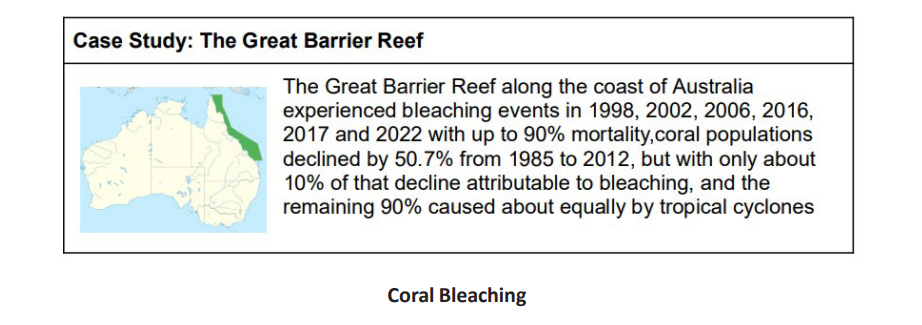
When corals face environmental stress, a remarkable phenomenon known as coral bleaching occurs, causing these vibrant marine organisms to undergo a visually striking transformation—turning completely white. This occurrence is a consequence of various stressors that disrupt the delicate balance within coral ecosystems. Corals, which form intricate symbiotic relationships with photosynthetic algae called zooxanthellae, depend on optimal environmental conditions for their survival. Factors such as elevated sea temperatures, pollution, and changes in water chemistry can induce stress, prompting the expulsion of the symbiotic algae from the coral tissues. As a result, the loss of these colorful algae exposes the underlying calcium carbonate skeleton, leaving the corals visibly bleached. Understanding the reasons behind this phenomenon is crucial for addressing the threats to coral reefs and implementing conservation measures to protect these vital ecosystems.
Contents
Answers
Corals, also known as the evergreen forests of the ocean, occupy less than 1% of the ocean floor but support approximately 25% of the marine biodiversity. Under stress they expel the symbiotic algae called zooxanthellae that live within their tissues and turn completely white this phenomenon is called coral bleaching.
Various reasons behind coral bleaching are as follows:
- High Ocean Water Temperature and Marine Heat Wave
- High ocean temperatures, caused by climate change, primary trigger for coral bleaching; even a rise of 1 degree Celsius can cause coral polyps to expel the heat-sensitive zooxanthellae.
- Pollution and Runoff
- Pollutants, including agricultural runoff and sewage, can disrupt the balance of nutrients and microbes in the water, affecting coral health.
- Ocean Acidification
- Increasing carbon dioxide (CO2) levels in the atmosphere due to global warming lead to ocean acidification. More acidic waters can harm coral calcification and weaken coral skeletons, making them more susceptible to bleaching.


- Extreme Weather Events
- Storms and hurricanes can physically damage corals, disrupt their symbiotic relationships, and expose them to stressors that lead to bleaching.
- Disease Outbreaks
- Outbreaks of coral diseases, often linked to environmental stressors and changes in water quality, can weaken corals and make them more prone to bleaching. Reducing carbon emissions, protecting marine ecosystems, and promoting sustainable fishing and tourism practices are essential steps in mitigating the stressors that lead to coral bleaching and in helping these fragile ecosystems recover.

In case you still have your doubts, contact us on 9811333901.
For UPSC Prelims Resources, Click here
For Daily Updates and Study Material:
Join our Telegram Channel – Edukemy for IAS
- 1. Learn through Videos – here
- 2. Be Exam Ready by Practicing Daily MCQs – here
- 3. Daily Newsletter – Get all your Current Affairs Covered – here
- 4. Mains Answer Writing Practice – here

